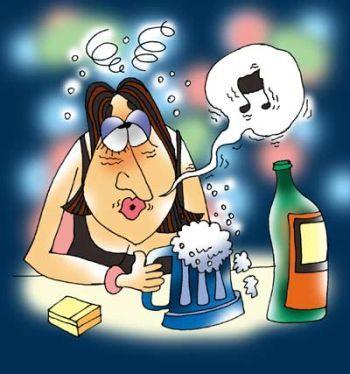 | « Back to article | Print this article |
Soaps, shampoos, toothpastes could be deadly for your nose
A round-up of all the health news that affects you.
Researchers have claimed that an antimicrobial agent found in common household soaps, shampoos and toothpastes may be finding its way inside human noses where it promotes the colonization of Staphylococcus aureus bacteria and could predispose some people to infection.
Triclosan, a man-made compound used in a range of antibacterial personal care products such as soaps, toothpastes, kitchen surfaces, clothes and medical equipment, was found in nasal passages of 41 per cent of adults sampled.
A higher proportion of subjects with triclosan also had S. aureus colonisation. S. aureus could promote infection in some populations such as people undergoing surgery.
Senior study author Blaise Boles, PhD, an assistant professor of molecular, cellular and developmental biology at the university, said that it’s really common in hand soaps, toothpastes and mouthwashes but there’s no evidence it does a better job than regular soap.
He said that this agent may have unintended consequences in our bodies. It could promote S. aureus nasal colonisation, putting some people at increased risk for infection.
Additional experiments found that S. aureus grown in the presence of triclosan was better able to attach to human proteins, and that rats exposed to triclosan were more susceptible to S. aureus nasal colonisation.
The study has been published in journal mBio.
Please click NEXT to continue reading
Note: All pictures are used only for illustration purposes
Consuming high-fat diet increases breast cancer risk
A new study has revealed that consuming a high-fat diet is associated with increased risk of certain types of breast cancer.
According to the researchers, high total and saturated fat intake were associated with greater risk of estrogen receptor- and progesterone receptor-positive (ER+PR+) breast cancer (BC), and human epidermal growth factor 2 receptor-negative (HER2-) disease.
Published data from epidemiological and case-control studies on the association between high fat intake and BC risk have been conflicting, which may be attributable to difficulties obtaining accurate information on fat intake and because of limited heterogeneity of intake within a specific geographic area from which the study cohorts live.
Furthermore, BC is now classified clinically into subtypes by ER, PR, and HER2 expression status and each subtype has its own prognosis and set of risk factors, which may also contribute to the inconsistencies in the published reports on this relationship.
Sabina Sieri, PhD, from the Epidemiology and Prevention Unit of the Department of Preventive and Predictive Medicine at Fondazione IRCCS Istituto Nazionale Dei Tumori in Milan Italy, and colleagues prospectively analysed data from 10,062 BC patients from the EPIC study with 11.5 years of follow-up.
The authors report high total and saturated fat intake were associated with greater risk of ER+PR+ BC. High saturated fat intake was also associated with greater risk of HER2- disease.
The authors conclude, “a high-fat diet increases BC risk and, most conspicuously, that high saturated fat intake increases risk of receptor-positive disease, suggesting saturated fat involvement in the etiology of receptor-positive BC.”
The study is published in the Journal of the National Cancer Institute.
Please click NEXT to continue reading
Green tomatoes can help develop bigger, stronger muscles
A new study suggests that green tomatoes may hold the answer to bigger, stronger muscles.
Using a screening method that previously identified a compound in apple peel as a muscle-boosting agent, a team of University of Iowa scientists has now discovered that tomatidine, a compound from green tomatoes, is even more potent for building muscle and protecting against muscle atrophy.
Muscle atrophy, or wasting, is caused by aging and a variety of illnesses and injuries, including cancer, heart failure, and orthopaedic injuries, to name a few.
It makes people weak and fatigued, impairs physical activity and quality of life, and predisposes people to falls and fractures.
The condition affects more than 50 million Americans annually, including 30 million people over age 60, and often forces people into nursing homes or rehabilitation facilities.
“Muscle atrophy causes many problems for people, their families, and the health care system in general,” Christopher Adams, MD, PhD, UI associate professor of internal medicine and molecular physiology and biophysics, said.
“However, we lack an effective way to prevent or treat it. Exercise certainly helps, but it’s not enough and not very possible for many people who are ill or injured,” he said.
In a new study, Adams searched for a small molecule compound that might be used to treat muscle atrophy.
He zeroed in on tomatidine using a systems biology tool called the Connectivity Map, which was developed at the Broad Institute of MIT and Harvard University.
Adams discovered that tomatidine generates changes in gene expression that are essentially opposite to the changes that occur in muscle cells when people are affected by muscle atrophy.
After identifying tomatidine, Adams and his team tested its effects on skeletal muscle. They first discovered that tomatidine stimulates growth of cultured muscle cells from humans.
Their next step was to add tomatidine to the diet of mice. They found that healthy mice supplemented with tomatidine grew bigger muscles, became stronger and could exercise longer. And, most importantly, they found that tomatidine prevented and treated muscle atrophy.
The findings are published online in the Journal of Biological Chemistry.
Please click NEXT to continue reading
Women at higher risk of dying due to booze than men
Researchers have suggested that females had an increased rate of all-cause mortality conferred by drinking compared with males, especially in heavy drinkers.
In the article “Effect of Drinking on All-Cause Mortality in Women Compared with Men: A Meta-Analysis,” Chao Wang and co-authors, Chinese Academy of Medical Sciences and Peking Union Medical Sciences (Beijing, China), modelled the relationship between the dose of alcohol consumed and the risk of death, comparing the results for drinkers versus non-drinkers and among male and female drinkers.
The study that compared the amount of alcohol consumed and death from all causes among nearly 2.5 million women and men showed that the differences between the sexes became greater as alcohol intake increased.
Susan G Kornstein, MD, Editor-in-Chief of Journal of Women’s Health, Executive Director of the Virginia Commonwealth University Institute for Women’s Health, Richmond, VA, and President of the Academy of Women’s Health, said while alcoholism is more common in men than women, female drinkers face greater risks to their health compared with male drinkers.
The study has been published in the Journal of Women’s Health.



